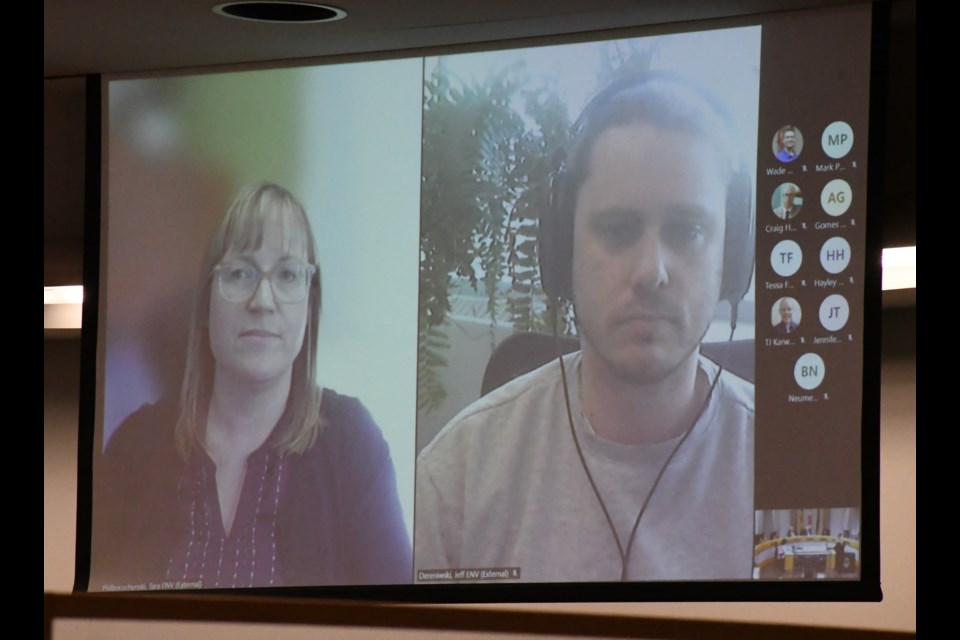MOOSEJAWTODAY.COM — Some rural and city residents want city hall to expand the current landfill instead of building a new one, but the province says several challenges may torpedo those hopes.
Representatives from the Ministry of Environment spoke virtually to city council during its April 8 regular meeting and discussed the environmental assessment process and regulatory requirements for constructing a new solid waste management venue.
Several issues affect the current landfill and prevent it from meeting current design and construction requirements, said Tara Pidborochynski, director of compliance assurance.
One issue is the existing dump does not have a liner or leachate collection, which means liquid seeps into the groundwater. The second issue is the property does not meet the necessary setbacks — or distances — from water bodies and occupied dwellings; there are residences and a creek within 500 metres of the site.
Thirdly, there are “unfavourable” geological conditions that fail to meet accepted industry standards, she continued. Specifically, the depth of the groundwater may limit the design of new cells where garbage would be deposited.
All these issues mean the existing landfill and immediate area “may not be suitable for landfill expansion and problematic” for designing anything new, Pidborochynski added.
Landfill siting
When choosing a location, proponents must provide a site suitability report that includes details about topography and surface water hydrology within 1,000 metres, a statement or document describing the geological and hydrogeological conditions and other considerations about rare or endangered animals or plants, Pidborochynski said.
Furthermore, dumps cannot be located within 500 metres of places where food is cooked or prepared for humans, nor can they be near motels, hotels or domestic residences; schools, churches, community centres or recreation venues; or within 100 metres of highways or cemeteries, she continued.
Saskatchewan uses Alberta’s landfill standards, which say new or expanding landfills must have five metres of clay and a liner, while landfill setbacks cannot be closer than 300 metres to natural or man-made water bodies, she added.
Council comments
Coun. Jamey Logan said there are farmsteads around the current landfill, as some landowners moved into the area after the city built the dump. He wondered if their proximity was another reason why it was difficult to expand.
Logan also noted that the existing landfill site is 900 metres long, while there are 700 metres of land available heading east, so he thought it would “be interesting to see how that shakes out” if expansion occurred.
“It depends on the situation. Most landfills are out in farm areas and a residence can pop up within 500 metres if they’re not approved by the (rural municipality) or government relations,” said Pidborochynski. “We have allowed variances (in the past) to that setback — with conditions.”
If the ministry sees nothing wrong with expanding a landfill and receives approval from the adjacent landowner and RM or city, it will grant the variance request, she stated.
As for whether Moose Jaw could expand its dump if it laid down clay and a liner, the ministry would have to rely on qualified engineers to develop a suitable design, said Pidborochynski.
However, because the current landfill does not meet site setbacks, is near freshwater streams, and affects groundwater, the ministry would not grant a variance.
“With groundwater impacts, building a landfill on top of that may trigger more assessment work because it may affect how groundwater moves and how fast it moves,” she added.
Effect on ag land
Coun. Kim Robinson asked whether the ministry considered the effects of building a landfill on arable productive agricultural land. He said that statistics show that between 2001 and 2021, Saskatchewan’s highly valuable ag land decreased by two million hectares (4,940,000 acres), which was concerning.
He also wondered how many landfills in Saskatchewan were privately operated.
There are roughly four privatized dumps, but those require more financial insurance from companies because if they build a landfill and then abandon it, the government needs money to decommission and reclaim the site, said Pidborochynski.
As for agricultural land, there are reps from several ministries — including agricultural — that sit on the Ministry of Environment’s review panel and provide input, said Jeff Dereniwski, senior environmental assessment administrator. One issue the panel handles is assessing the effect of new — greenfield — projects on soil production and removing valuable land, which concerns the public.
“Historically, landfills were often sited (on) low-value ag land, which is why we’re running into many situations of non-compliance and siting issues around surface and groundwater,” he continued.
There is a shift toward finding more stable sites for industrial projects, but that must also be balanced between finding suitable locations that the proponent can afford and considering the value and productivity of soil, Dereniwski added.
The next regular council meeting is on Monday, April 22.





